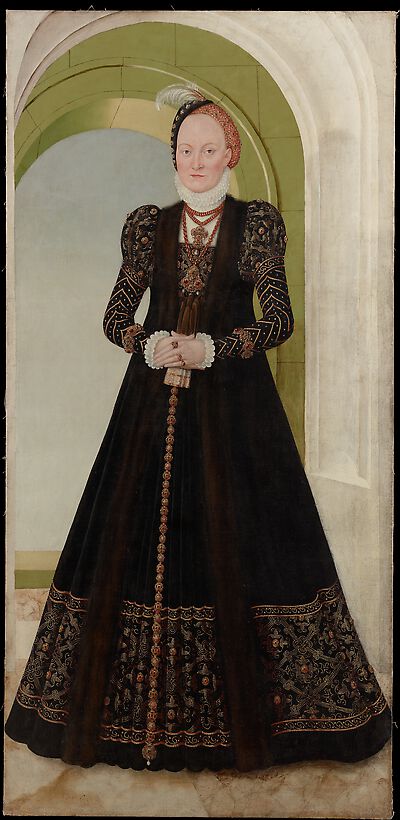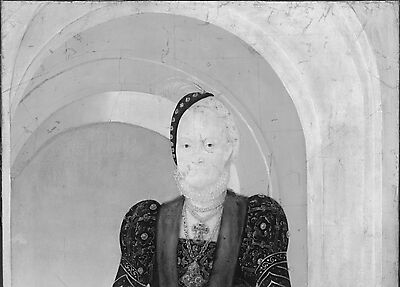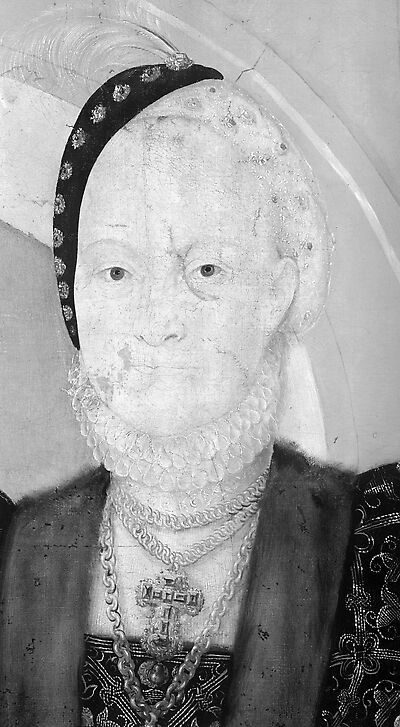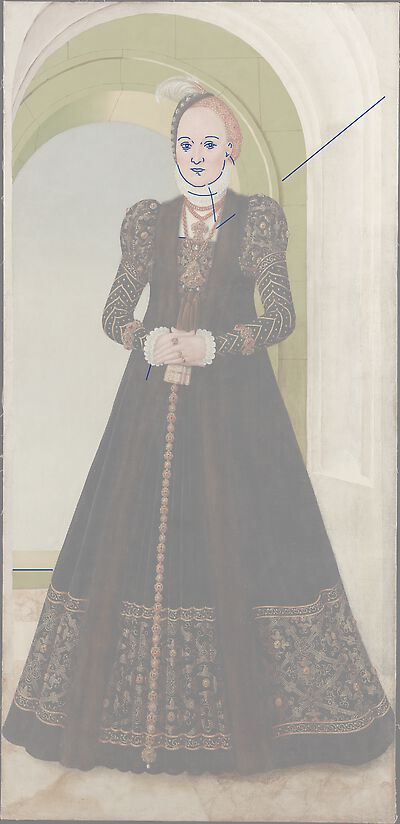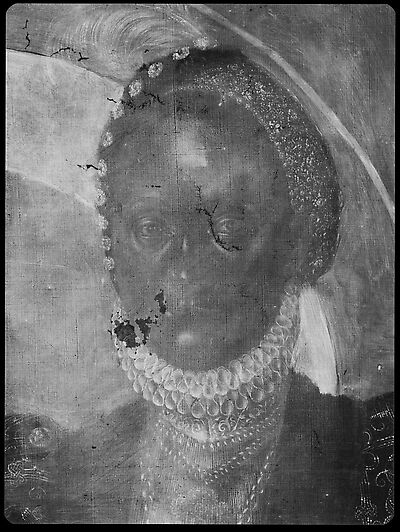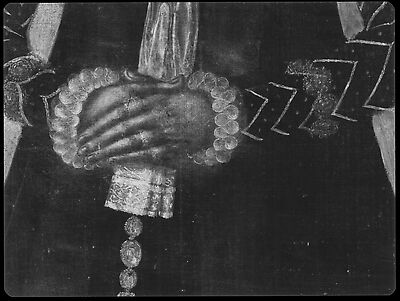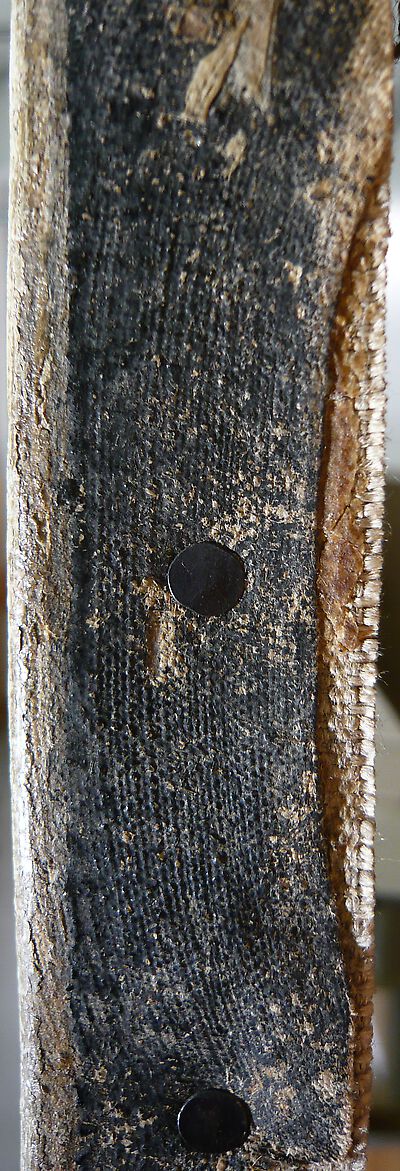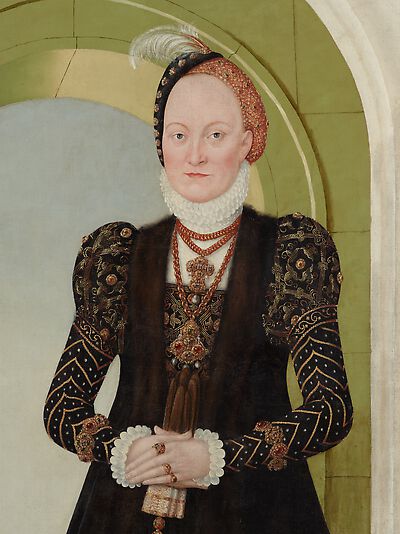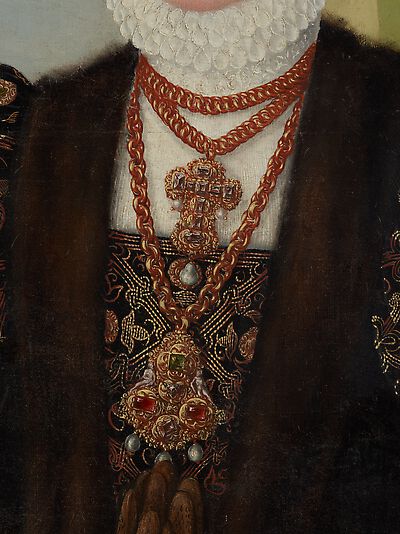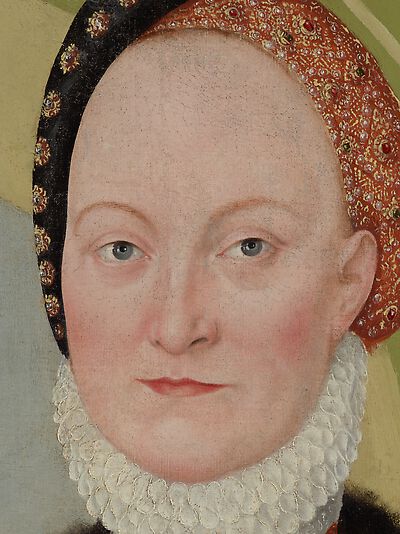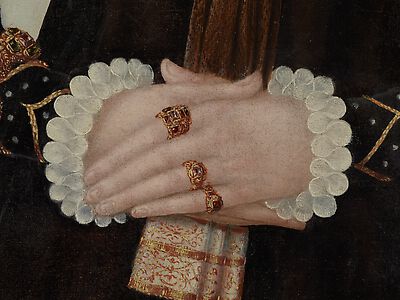Support
A single piece of fine, plain weave linen canvas serves as the support. The stretcher is not original.
The original format was probably marginally cropped: on all four sides the painted surface extends over the tacking margin. This is generally the case with the monochrome, light paint of the architectural background, but also occasionally with the painted foreground (marble floor). There is a black painted boarder along the tacking margins. These margins were probably originally integrated in the picture plane. In this case the canvas would have been stretched with the edges flat – not folded over a strainer – and then immediately covered by simple superimposed frame members. The painted black boarder can probably be interpreted within the context of this relatively common method of stretching and framing [see Heydenreich 2007B, 251-252]. The tacking-margins have been cut flush with the stretcher depending on the available width. This probably occurred during the course of the lining; the upper edge is an exception as here the selvage has for the most part survived (see fig. AT_KHM_GG3141_FR-none_2012-03-30_Detail_02). The black boarder has a width of c. 2 cm; prominent cusping and the original nail holes are visible, suggesting that the alteration to the size was least here. On the right side prominent cusping is in part also visible and the painting appears to be only marginally trimmed, the less evident cusping on the left side suggests slightly more material was removed. The bottom edge was probably also only marginally altered.
Ground and Imprimatura
- white ground; analysis was not carried out
[Translation, Smith, cda]
Underdrawing
An examination with infrared reflectography only revealed underdrawing in a few areas. In the sitter’s face the facial features (eyes and eyebrows, nose, mouth, ear, the contours of the cheeks and chin) are indicated. The lines are very fine and appear to be executed in a dry medium. Here the underdrawing can be seen with the naked eye (see Fig. AT_KHM_GG3141_FR-none_2012-03-30_Detail_06). The drawing appears very controlled and sure, suggesting that it was transferred from a pre-existing design. Further lines are visible in the ruff, along the contour of the neckline of the dress on the left and a short vertical line in the robe below the sitter’s right hand. In addition to this underdrawing concerning the figure there are further lines, which serve as a construction aid for the architectural background: in the area of the ruff/blouse there is an arched line, which appears to continue the contour of the lower arch, a further very short one near the ear can also be allocated to the architecture. In the background on the right there is a long diagonal line, which resumes in the chest area. It may be a vanishing line analagous with the one on the left side of the male pendant (Elector August of Saxony, AT_KHM_GG3252_FR-none). A horizontal line is visible between the two architectural elements at the bottom left.
[Translation, Smith, cda]
Paint Layers and Gilding
The composition was for the most part laid in with an opaque paint application and at times with bold brush strokes, particularly in the rapidly executed areas of the architectural background. The decoration of the clothes and the precious jewellery of the sitter were worked up with great attention to detail, the highlights exhibit a slightly thicker impasto paint application. The marble floor was executed employing thin glazes.
The sequence of paint application is as follows: the flesh paint was probably applied first, followed by the black sections of the robe (with the exception of the hat) and the marble floor in the foreground. Then the background architecture was painted, first green followed by the light areas and the cool, bluish-grey perspective of the arch; the paint application in the background and the foreground crops the figure. White areas, like for example the ruff or the decorative and ornamental elements on her dress were painted last. Light areas like the flesh paint and the blouse received a local underpainting. This relatively generous paint application, which presumably contains lead white is readily visible in the x-radiograph. (see fig. AT_KHM_GG3141_FR-none_2012-03-23_Detail_01_X-radiograph and AT_KHM_GG3141_FR-none_2012-03-23_Detail_02_X-radiograph). The x-radiographs also show the dense application for highlights in the face and hands. On the right sleeve a pentimento can be observed in the curled cuff, which was originally positioned further to theleft.
The painted black boarder lines along the edges, which are now folded over, suggest that the painting was originally stretched flat on a strainer. Simple members attached directly over the edges served as a frame (see also the entry under 'support').
[Translation, Smith, cda]
Framing
- not original
[Translation, Smith, cda]
